Related Research Articles

The United States Army (USA) is the land service branch of the United States Armed Forces. It is one of the eight U.S. uniformed services, and is designated as the Army of the United States in the U.S. Constitution. As the oldest and most senior branch of the U.S. military in order of precedence, the modern U.S. Army has its roots in the Continental Army, which was formed to fight the American Revolutionary War (1775–1783)—before the United States of America was established as a country. After the Revolutionary War, the Congress of the Confederation created the United States Army on 3 June 1784 to replace the disbanded Continental Army. The United States Army considers itself to be a continuation of the Continental Army, and thus considers its institutional inception to be the origin of that armed force in 1775.
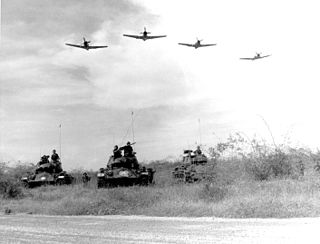
Combined Arms is an approach to warfare which seeks to integrate different combat arms of a military to achieve mutually complementary effects. According to strategist William S. Lind, combined arms can be distinguished from the concept of "supporting arms" as follows:
Combined arms hits the enemy with two or more arms simultaneously in such a manner that the actions he must take to defend himself from one make him more vulnerable to another. In contrast, supporting arms is hitting the enemy with two or more arms in sequence, or if simultaneously, then in such combination that the actions the enemy must take to defend himself from one also defends himself from the other(s).

World War III and the Third World War are names given to a hypothetical third worldwide large-scale military conflict subsequent to World War I and II. The term has been in use since at least as early as 1941. Some have applied it loosely to refer to limited or smaller conflicts such as the Cold War or the War on Terror, while others assumed that such a conflict would surpass prior world wars both in its scope and in its destructive impact.

Lion of Babylon or Asad Babil is the name given to a project of the Ba'athist-era Iraqi army to locally produce the Soviet T-72 tank during the late-1980s. The tanks were to be assembled at a factory near Taji, Iraq. This project represented an attempt by Saddam Hussein's regime to locally manufacture tanks, triggered in part by the Western embargo against the sale of military vehicles to Iraq during the Iran–Iraq War. However it is disputed if any tanks have ever been finished.

The 2nd Armored Division was an armored division of the United States Army. The division played important roles during World War II in the invasions of Germany, North Africa, and Sicily and in the liberation of France, Belgium, and the Netherlands. During the Cold War, the division was primarily based at Fort Hood, Texas, and had a reinforced brigade forward stationed in Garlsedt, West Germany. After participation in the Persian Gulf War, the division was inactivated in 1995. The division's remnants are now part of the 1st Cavalry Division stationed at Fort Hood.

The ICV Stryker is a family of eight-wheeled armored fighting vehicles derived from the Canadian LAV III. Stryker vehicles are produced by General Dynamics Land Systems for the United States Army. It has four-wheel drive (8×4) and can be switched to all-wheel drive (8×8).
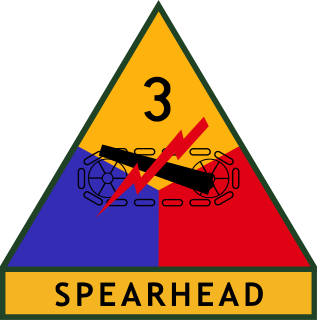
The 3rd Armored Division was an armored division of the United States Army. Unofficially nicknamed the "Third Herd," the division was first activated in 1941 and was active in the European Theater of World War II. The division was stationed in West Germany for much of the Cold War and also participated in the Persian Gulf War. On 17 January 1992, still in Germany, the division ceased operations. In October 1992, it was formally inactivated as part of a general drawing down of U.S. military forces at the end of the Cold War.

III Corps is a corps of the United States Army headquartered at Fort Hood, Texas. It is a major formation of the United States Army Forces Command.

The Patria Pasi is a Finnish-made six-wheeled armoured personnel carrier (APC) originally designed for Finnish Defence Forces. The first version was produced in 1983 and serial production began in 1984. It was designed to operate with ease of use, simple structure and low-cost maintenance. The basic appearance and configuration of Patria Pasi is similar to most wheeled APCs. The XA-180 and XA-185 versions are fully amphibious while the XA-203 is not.

Exercise Campaign Reforger was an annual exercise and campaign conducted, during the Cold War, by NATO. The exercise was intended to ensure that NATO had the ability to quickly deploy forces to West Germany in the event of a conflict with the Warsaw Pact. Although most troops deployed were from the United States, the operation also involved a substantial number of troops from other NATO countries including Canada and the United Kingdom.
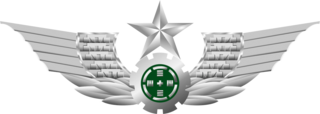
The People's Liberation Army Ground Force (PLAGF) is the land-based service branch of the People's Liberation Army and the largest and oldest branch of the entire Chinese armed forces. The PLAGF can trace its lineage from 1927 as the Chinese Red Army; however, it was not officially established until 1948.
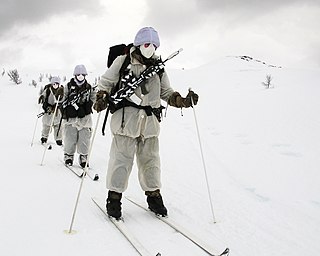
Cold-weather warfare, also known as Arctic warfare or winter warfare, encompasses military operations affected by snow, ice, thawing conditions or cold, both on land and at sea. Cold-weather conditions occur year-round at high elevation or at high latitudes, and elsewhere materialise seasonally during the winter period. Mountain warfare often takes place in cold weather or on terrain that is affected by ice and snow, such as the Alps and the Himalayas. Historically, most such operations have been during winter in the Northern Hemisphere. Some have occurred above the Arctic Circle where snow, ice and cold may occur throughout the year. At times, cold or its aftermath—thaw—has been a decisive factor in the failure of a campaign, as with French invasion of Russia in 1812, the Soviet invasion of Finland in 1939, and the German invasion of the Soviet Union during World War II.
Able Archer 83 was the annual NATO Able Archer exercise conducted in November 1983. The purpose for the command post exercise, like previous years, was to simulate a period of conflict escalation, culminating in the US military attaining a simulated DEFCON 1 coordinated nuclear attack. The five-day exercise, which involved NATO commands throughout Western Europe, was coordinated from the Supreme Headquarters Allied Powers Europe (SHAPE) headquarters in Casteau, Belgium.
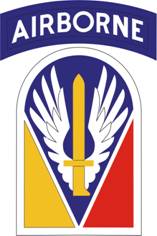
Fort Polk is a United States Army installation located in Vernon Parish, approximately ten miles (15 km) east of Leesville, Louisiana, and thirty miles (50 km) north of DeRidder in Beauregard Parish, Louisiana.

The reorganization plan of the United States Army is a current modernization (2017-2028) and reorganization (2006-2016) plan of the United States Army that was implemented (2006-2016) under the direction of Brigade Modernization Command. This effort formally began in 2006 when General Peter Schoomaker, was given the support to move the Army from its Cold War divisional orientation to a full-spectrum capability with fully manned, equipped and trained brigades; this effort was completed by the end of 2016. It has been the most comprehensive reorganization since World War II and included modular combat brigades, support brigades, and command headquarters, as well as rebalancing the active and reserve components. The plan was first proposed by the Army's 34th Chief of Staff, Eric Shinseki, in 1999, but was bitterly opposed internally by the Army. By 2020, the Army's 40th Chief of Staff was calling for transformational change, rather than incremental change by the Army. In 2021, Gen. McConville, the Army's 40th Chief of Staff, laid out Aimpoint 2035, a direction for the Army to achieve Corps-level Large-scale combat operations (LSCO) by 2035, with Waypoints from 2021 to 2028.
The history of the United States Army began in 1775. From its formation, the United States Army has been the primary land based part of the United States Armed Forces. The Army's main responsibility has been in fighting land battles and military occupation. The Corps of Engineers also has a major role in controlling rivers inside the United States. The Continental Army was founded in response to a need for professional soldiers in the American Revolutionary War to fight the invading British Army. Until the 1940s, the Army was relatively small in peacetime. In 1947, the Air Force became completely independent of the Army Air Forces. The Army was under the control of the War Department until 1947, and since then the Defense Department. The U.S. Army fought the Indian Wars of the 1790s, the War of 1812 (1812–15), American Civil War (1861–65), Spanish–American War (1898), World War I (1917–18), World War II (1941–45), Korean War (1950–53) and Vietnam War (1965–71). Following the Cold War's end in 1991, Army has focused primarily on Western Asia, and also took part in the 1991 Gulf War and war in Iraq, and the war in Afghanistan.
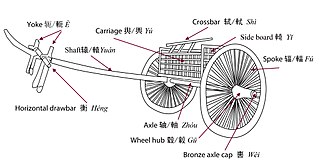
The ancient Chinese chariot was used as an attack and pursuit vehicle on the open fields and plains of ancient China from around 1200 BCE. Chariots also allowed military commanders a mobile platform from which to control troops while providing archers and soldiers armed with dagger-axes increased mobility. They reached a peak of importance during the Spring and Autumn period, but were largely superseded by cavalry during the Han Dynasty.
Exercise Able Archer was an annual exercise by NATO military forces in Europe that practiced command and control procedures, with emphasis on transition from conventional operations to chemical, nuclear, and conventional operations during a time of war. When it was active, it was seen as the culmination of Exercise Autumn Forge. The exercise is best known for Able Archer 83, which is believed to have nearly started a nuclear war with the Soviet Union.

EUBG 2014 II or EUBG 2014-2 is an EU Battlegroup consisting of around 3,000 troops from Belgium, Germany, Luxembourg, Spain, the Netherlands and North Macedonia. It was on standby from 1 July until 31 December 2014.
References
- ↑ "Reforger 83- Crested Cap 83 Determination" (PDF). United States Air Force. 3 December 1983. Retrieved 11 November 2013.
- ↑ "New Evidence on Autumn Forge 83 from the Netherlands". 27 June 2013.